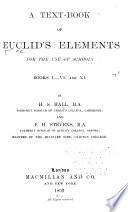 | Euclid - Geometry - 1892 - 460 pages
...AC'^the rect. EA, AD. vi. 16. QED PROPOSITION D. THEOREM. Tlie rectangle contained by the diagonals of a quadrilateral inscribed in a circle is equal to the sum of the two rectangles contained by its opposite sides. Let ABCD be a quadrilateral inscribed in a circle,... | |
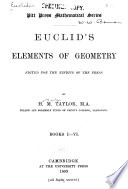 | Henry Martyn Taylor - 1893 - 486 pages
...Wherefore, if two triangles &o. PROPOSITION 37 B. The rectangle contained by the diagonals of a convex quadrilateral inscribed in a circle is equal to the sum of the rectangles contained by pairs of opposite sides*. Let ABCD be a quadrilateral inscribed in a circle and AC, BD... | |
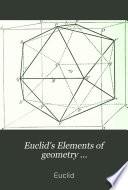 | Henry Martyn Taylor - Euclid's Elements - 1895 - 708 pages
...Wherefore, if two triangles &c. PROPOSITION 37 B. The rectangle contained by the diagonals of a convex quadrilateral inscribed in a circle is equal to the sum of the rectangles contained by pairs of opposite sides*. Let ABCD be a quadrilateral inscribed in a circle and AC, BD... | |
 | 1896 - 154 pages
...contained by the perpendiculars on the diagonals. 3. The rectangle contained by the diagonals of a quadrilateral inscribed in a circle is equal to the sum of the two rectangles contained by the opposite sides. In a quadrilateral inscribed in a circle, the rectangle... | |
 | Andrew Wheeler Phillips, Irving Fisher - Geometry - 1896 - 276 pages
...to the sum of the other two sides (§ 176). . 229. Exercise. — The sum of two opposite angles of a quadrilateral inscribed in a circle is equal to the sum of the other two angles, and is equal to two right angles. *r' 230. Exercise. — Two circles are tangent... | |
 | Andrew Wheeler Phillips, Irving Fisher - Geometry, Modern - 1896 - 276 pages
...the sum of the other two sides (§ 176). • 220. Exercise. — The sum of two opposite angles of a quadrilateral inscribed in a circle is equal to the sum of the other two angles, and is equal to two right angles. 230. Exercise. — Two circles are tangent externally... | |
 | George Washington Hull - Geometry - 1897 - 408 pages
...§179 §251 §217 §119 §278 QED PROPOSITION XXXV. THEOREM. 284. The product of the two diagonals of a quadrilateral inscribed in a circle is equal to the sum of the products of its opposite sides. Given—AC and DB the diagonals of the quadrilateral ABCD inscribed... | |
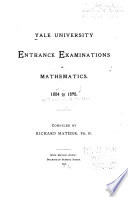 | Mathematics - 1898 - 228 pages
...the point of tangency passes through the center of the circle. 3. The sum of two opposite angles of a quadrilateral inscribed in a circle is equal to the sum of the other two angles, and is equal to two right angles. 4. Construct with ruler and compass a circle passing... | |
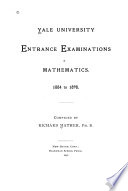 | Yale University - 1898 - 212 pages
...point of tangeiicy passes through the center of the circle. 3. The sum of two opposite angles of a quadrilateral inscribed in a circle is equal to the sum of the other two angles, and is equal to two right angles. 4. Construct with ruler and compass a circle passing... | |
| |